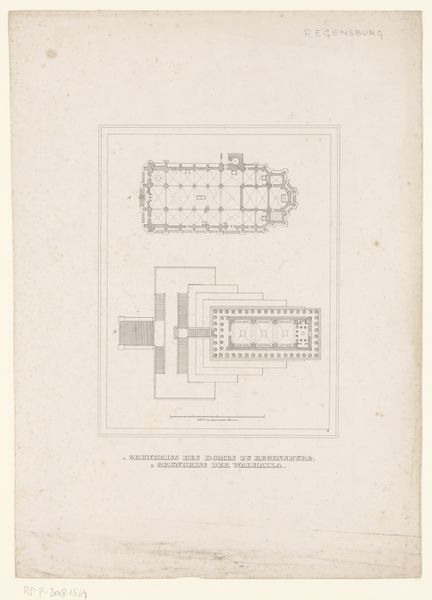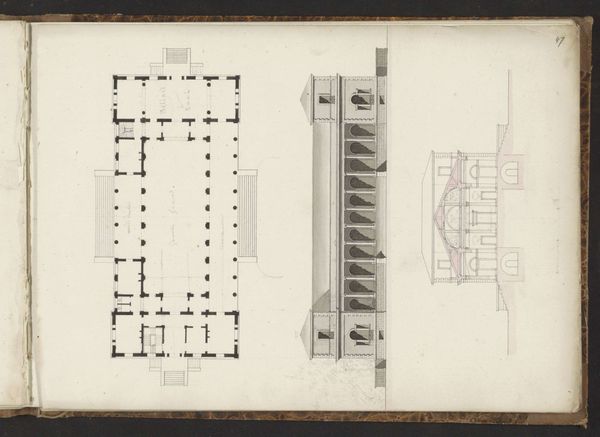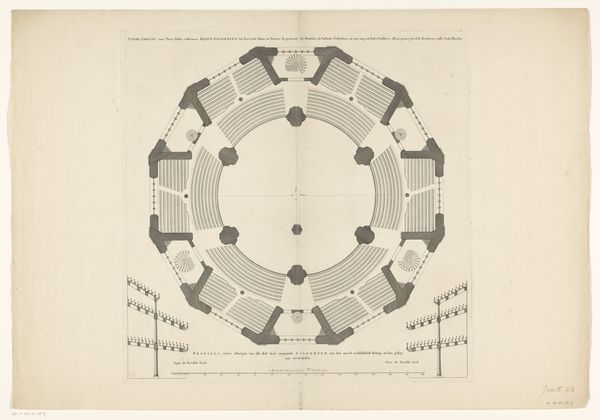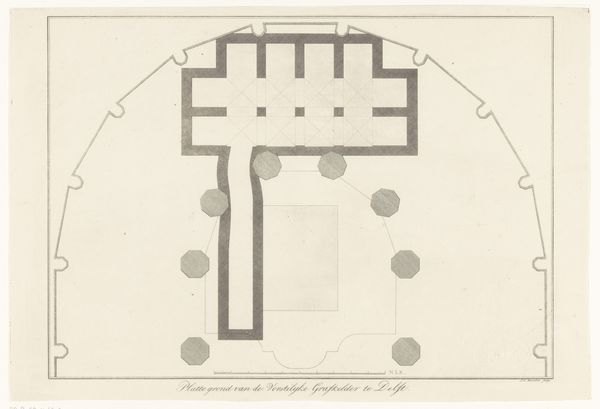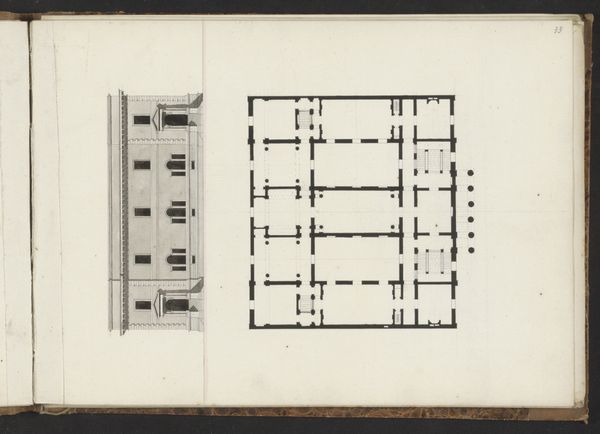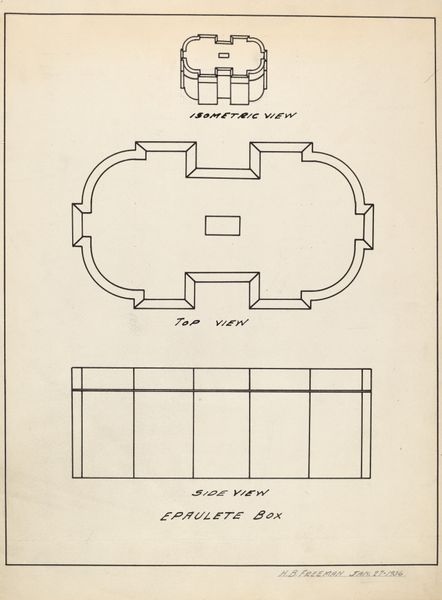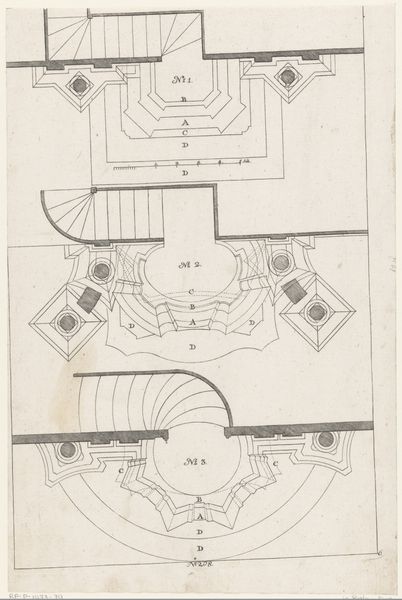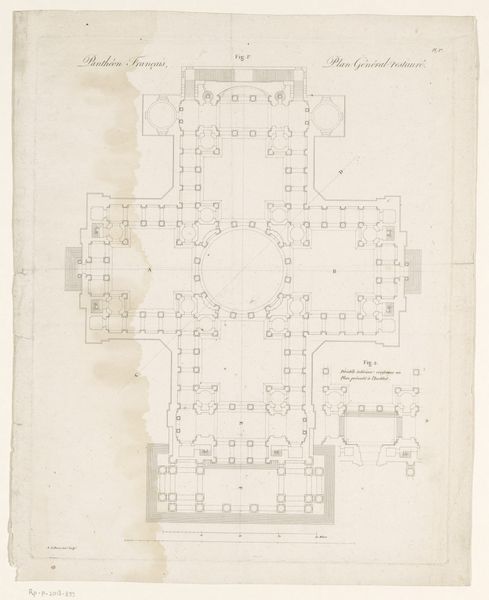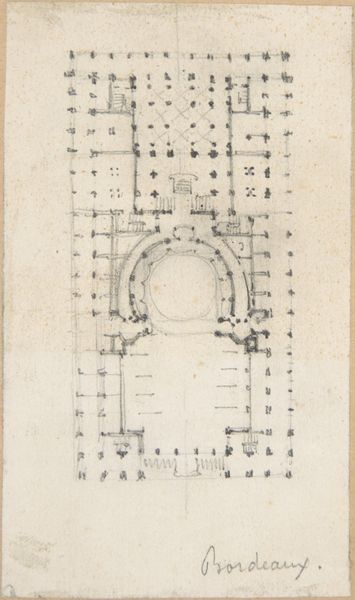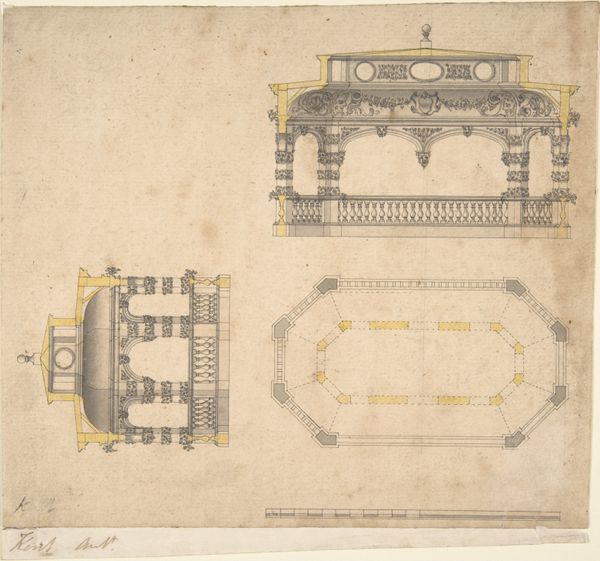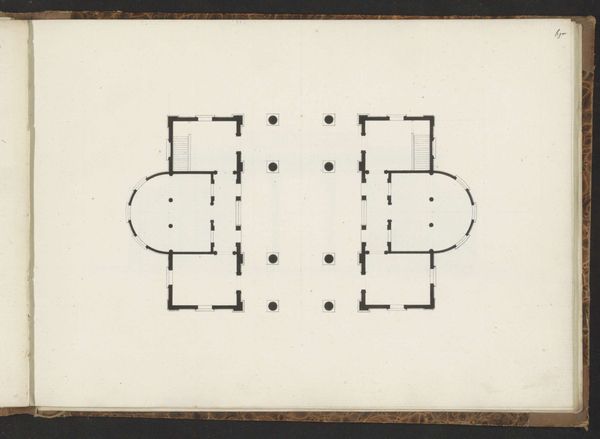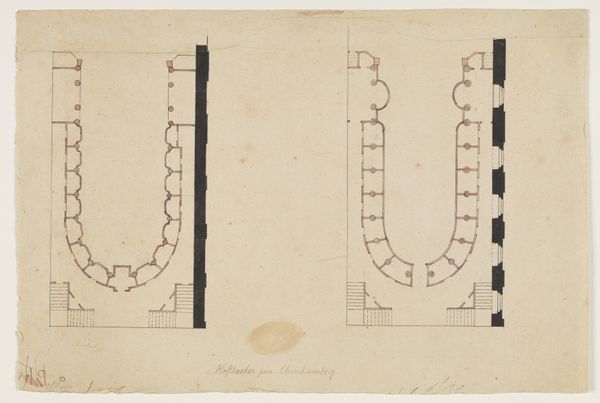
Plattegronden van de Zuider- en Westerkerk met omtrek van het ontwerp voor een koepelkerk op de Botermarkt te Amsterdam c. 1700 - 1705
0:00
0:00
danielstopendaal
Rijksmuseum
drawing, print, engraving, architecture
#
drawing
#
baroque
# print
#
cityscape
#
engraving
#
architecture
Dimensions: height 469 mm, width 274 mm, height 260 mm, width 274 mm, height 210 mm, width 274 mm
Copyright: Rijks Museum: Open Domain
Editor: This engraving, created around 1700-1705 by Daniël Stopendaal, depicts architectural plans for churches in Amsterdam. It’s called "Plattegronden van de Zuider- en Westerkerk met omtrek van het ontwerp voor een koepelkerk op de Botermarkt te Amsterdam." I find the precision quite striking. How do you interpret this work, especially considering the socio-political context of Amsterdam at that time? Curator: This piece speaks volumes about power dynamics in the Dutch Golden Age. Amsterdam, as a burgeoning mercantile hub, experienced a surge in civic pride and religious identity. The architectural plans suggest more than just building design; they symbolize the city’s ambition to project its influence, both economically and religiously. Editor: That's fascinating. Can you elaborate on how the design of these churches reflects these ambitions? Curator: The dome, notably, embodies more than just an architectural preference. Its projection signifies dominance and aspiration towards higher ideals, a sort of celestial authority aligning itself with earthly governance. Furthermore, Stopendaal was active during the period of rising religious debates. How did architectural designs mirror religious movements such as the rise of Protestantism? Editor: So, these architectural choices weren't just about aesthetics but also about reinforcing a certain ideological viewpoint within the urban landscape? Curator: Precisely! Urban planning and architecture became tools to visually communicate the dominant social values, dictating the narrative and consolidating power structures in ways that resonate even today. The spatial layout itself would reinforce established hierarchies and dictate acceptable behavior and devotion. Editor: I never thought of it that way before! Seeing architecture as a statement of power and control is a completely new lens for me. Thank you. Curator: It’s a reminder that art is never truly detached from its context. Analyzing architectural designs within historical power relations brings critical perspective to its historical significance.
Comments
No comments
Be the first to comment and join the conversation on the ultimate creative platform.

